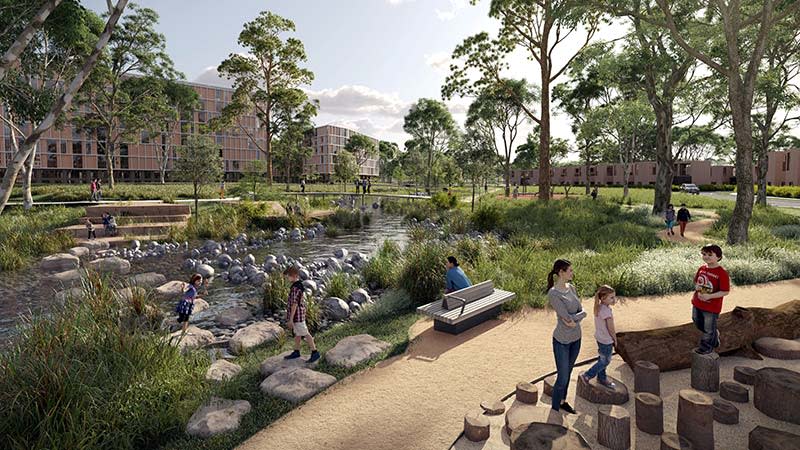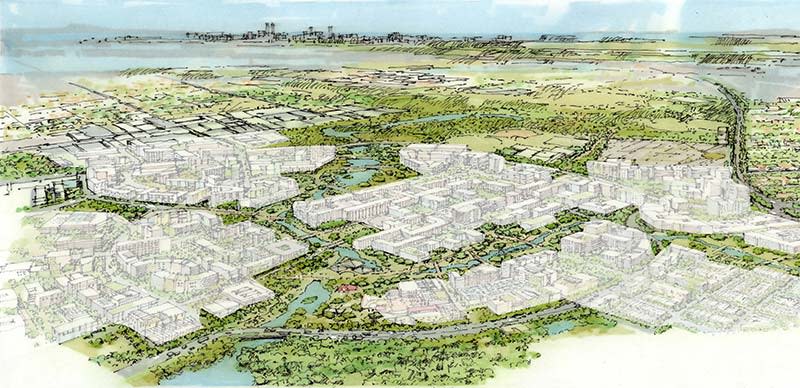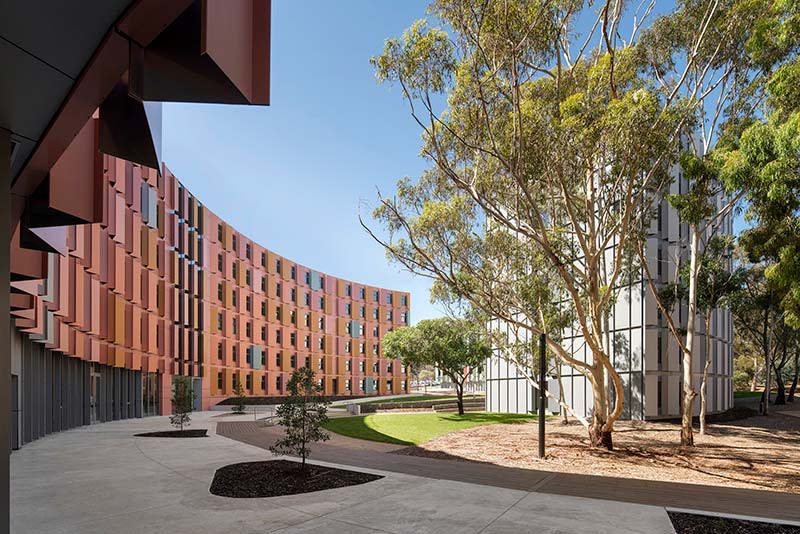La Trobe Reveals $5bn University City Masterplan

La Trobe University has unveiled a $5-billion masterplan to transform its 255ha Bundoora campus into a mixed-use city in Melbourne’s northern suburbs.
The university plans to develop four village town centres: three villages with housing for up to 15,000 residents across 9300 homes and one with facilities for 40,000 students.
The 30-year La Trobe University City project would deliver the connected neighbourhoods that include 15 per cent affordable housing alongside 230,000sq m of academic space, 330,000sq m of research and innovation space, 160,000sq m of commercial space and 50,000sq m of hospitality and retail outlets.
Chancellor John Brumby said University City could boost gross regional product in Melbourne’s north-east by $440 million annually.
Additional interstate and international students could contribute around $202 million per annum to the Victorian economy.
“La Trobe University City will not only transform our campus, it will also create a thriving community that drives innovation and economic prosperity,” Brumby said.
Plenary Group was appointed as the university’s preferred master development partner in 2022 which, with Kane Constructions, began work on an $82-million health clinic at the Melbourne campus earlier this year.
North Village, next to the Polaris and Springthorpe communities, would be focused on residential, while East Village, near Macleod Train Station, would be a mixed-use project centred on student accommodation.

South Village would focus on research, innovation and commercial activity, while the existing campus core would expand west with commercial, retail and academic developments.
According to reports, the university anticipates developing about 1200 homes during the first decade. About 500 are expected to be townhouses that will be put to market.
Student accommodation would increase from 1350 beds to around 2300 within the campus. The remaining housing would potentially comprise market housing, build-to-rent, researcher accommodation and affordable housing.
Vice-Chancellor Professor Theo Farrell said the initiative would leverage La Trobe’s strengths in health innovation, artificial intelligence, sustainable agriculture and digital transformation.
“University City is a bold, purpose-built innovation city where education drives everything—and sparks so much more,” Farrell said.
The masterplan projects employment for 33,500 people, including 3000 construction roles.

Development would incorporate more than a million square metres of regenerative open space, including the Nangak Tamboree Eco-Corridor.
The university has submitted change-of-use plans to the state government to permit land sales for private development.
Plenary Group head of infrastructure Damien Augustinus said University City would redefine how university precincts were designed and delivered.
“University City will cement La Trobe as a global university of choice for students and staff, increase engagement with government, industry and the community, and showcase it as a sustainability exemplar,” Augustinus said.
“Our experience in forming long-term partnerships that deliver complex projects, combined with the depth of experience that we have in the education and life sciences space, make us ideally placed to deliver on La Trobe’s University City vision.”

La Trobe University was established in 1964, becoming Victoria’s third university and Australia’s 12th.
The Bundoora Campus comprises a raft of post-war modernist and brutalist buildings, with the original masterplan designed in the late 1960s by master architect Roy Simpson from the Melbourne firm Yuncken Freeman.
Notable buildings include the David Myers Building designed by Sir Roy Grounds in 1968 and more recent additions such as the mass timber PBSA building by Jackson Clements Burrows and the Sylvia Walton Building designed by Lyons.














